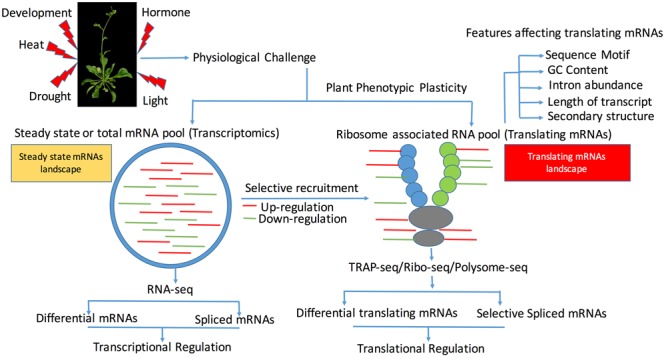FIGURE 1.

Schematic view of transcriptional (steady state mRNAs) and translating (mRNA bounds to ribosomes) mRNAs in plants across abiotic stress and development. Induction of abiotic stress or changes in stages of development requires specific set of the transcriptional mRNAs, which is represented by the steady state mRNAs and translationally active mRNAs as represented by the ribosome bound mRNAs. Differential regulation of these steady state mRNAs and translating mRNAs play a major role in defining the phenotypic plasticity of the plant to a stress environment. Translating mRNAs represent a subset of pool of mRNAs, which are bound to ribosomes and can be identified using either intact ribosomal immunoprecipitation or TRAP-Seq, translating ribosome affinity purification (TRAP), which involves the RNA-sequencing of the purified ribosomes. To reduce the contamination of the messenger ribonucleoproteins (mRNPs), FLAG-tagged ribosomal protein L18 (RPL18) is used.
